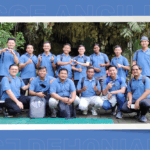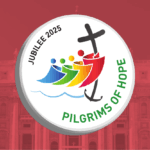In his apostolic letter proclaiming the Year of Consecrated Life (2015), Pope Francis set out three major objectives. The third was: “to embrace the future with hope.” The Pope was fully aware of the many obstacles facing consecrated life—obstacles that still remain today: the decline in vocations and the aging of members, particularly in Western countries; the economic difficulties linked to the global financial crisis; the challenges of internationalization and globalization; the traps of relativism; social marginalization; and the loss of influence.
Although these uncertainties weigh heavily and may lead to discouragement or frustration among those who have given themselves to God, it is precisely in these difficulties that our hope is revealed—a hope born of faith in the One who continues to say to us: “Do not be afraid, for I am with you” (Jer 1:8).
The Pope also added that “the hope we speak of is not based on numbers or achievements, but on the One in whom we have placed our trust and for whom ‘nothing is impossible’” (Lk 1:37). This is the hope that does not disappoint, and that will enable consecrated life to continue writing a beautiful story into the future. Indeed, consecrated life is fruitful when it breathes joy and hope.
Hope is necessary
The writer André Malraux said that “a world without hope is unbreathable.” This clear truth is echoed in the words of Alvin Toffler, who noted that “constant pessimism is a substitute for thought.” Where sadness or depression reign, there is no room for hope. But it is reborn as soon as light enters our minds.
In fact, human beings cannot be content with merely surviving or living from day to day, nor can they resign themselves to the present by clinging only to material realities. Such an attitude locks us in individualism and eats away at hope, breeding a quiet sadness deep within the heart that ultimately makes us bitter and impatient.
Yet hope is far more than passive waiting: it is a transformative force in society. As energy directed toward the future, it is creative, daring, and full of dreams. To hope is to want to go further, to refuse to settle for what is or what has “always been that way.”
The dynamism of hope does not pull us out of history; it plunges us into it. It does not distance us from others; it opens us to our neighbor. It does not trap us in the present; it propels us toward the ultimate newness of eternity.
To hope is to walk toward the Lord, committing ourselves daily to the building of a more just and fraternal world.
Cardinal Eduardo Pironio, with remarkable lucidity, observed that we are living in a prematurely aged world. He stated:
“We have real reasons to be worried and sad: the world, the Church, and religious communities are not doing well. But there is one fundamental reason to remain joyful and never lose hope: Christ is risen and continues his Paschal presence among us until the end of time.”
This is the great motivation that must nourish our hope.
Consecrated life: prophecy of hope
Hope is naturally oriented toward eschatology, for it is there that it finds its full fulfillment. Indeed, “this hope, much deeper than daily satisfactions or improved living conditions, enables us to rise above trials and calls us to keep in mind the greatness of the goal to which we are called: Heaven.”
The Constitution Lumen Gentium affirms that “the promised restoration that we await has already begun in Christ; it advances through the mission of the Holy Spirit and, through him, continues in the Church. In her, faith enlightens us about the meaning of our temporal life, and in the hope of future blessings, we carry out the mission the Father has entrusted to us, working for the salvation of the world.”
In this perspective, consecrated persons—called to follow Jesus and embody his way of life—highlight the eschatological dimension of their existence. Through their very lives, they bear witness to the Kingdom already inaugurated in Jesus Christ (Mk 1:15), which will find its fulfillment in the Parousia (1 Cor 15:19–28).
The Second Vatican Council emphasizes that “the religious state, by freeing its members from worldly concerns, more clearly manifests to the faithful the heavenly goods already present in this age. It bears witness to the new and eternal life acquired by Christ’s redemption and foretells the future resurrection and the glory of the heavenly Kingdom.”
Thus, consecrated life is called to embody the three fundamental dimensions of Christian hope:
• the search for what is definitive (eschatological tension);
• daily engagement in history;
• unshakable trust in the Risen Christ.
When these elements come together, consecrated life becomes a prophetic cry: that the Kingdom of God is already at work among us. But more than that, it becomes a source of hope—awakening in the faithful a hunger for eternity, calling them to trust in God, to fraternity, and to commitment in transforming the world.
Watchers of hope
I conclude this brief reflection with the inspiring words of Cardinal Pironio:
“To become settled in time is to sin against hope. For we were made for eternal life. We do not have a lasting city here below. Our true homeland is in heaven. Meanwhile, we live ‘in blessed hope’ (Titus 2:13). Our fundamental attitude, as pilgrims, is not only to yearn for eternal goods and scorn or ignore temporal ones, but to live in a state of watchfulness: in an attitude of prayer, practicing charity, and making our talents bear fruit, in a fervent and active expectation of the Lord who is coming.”





